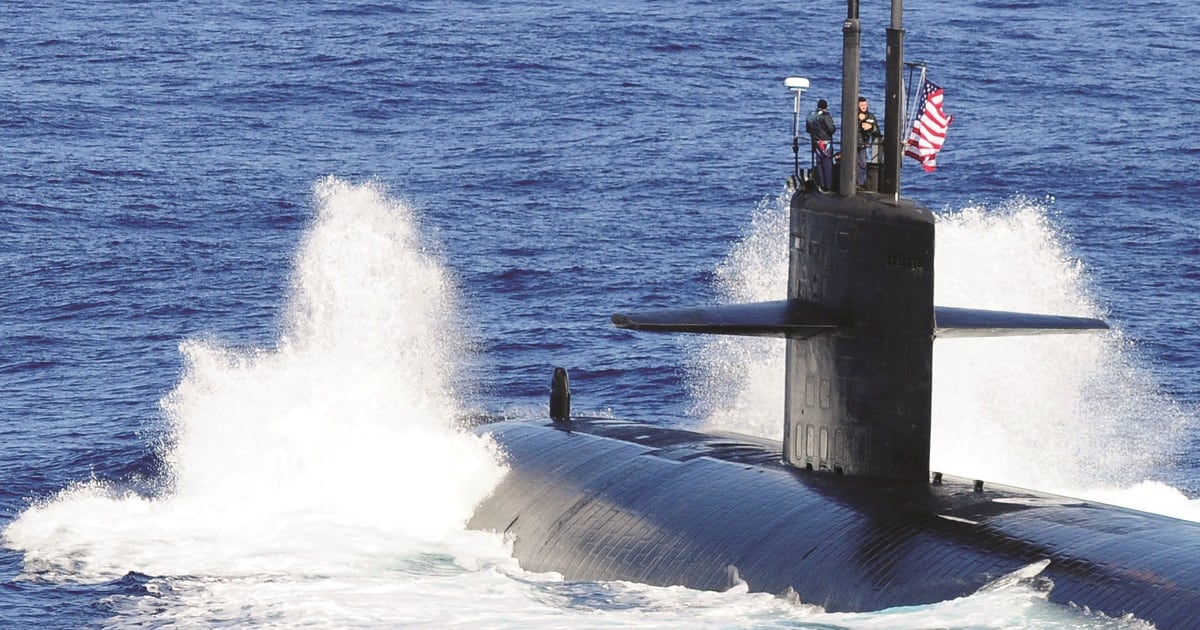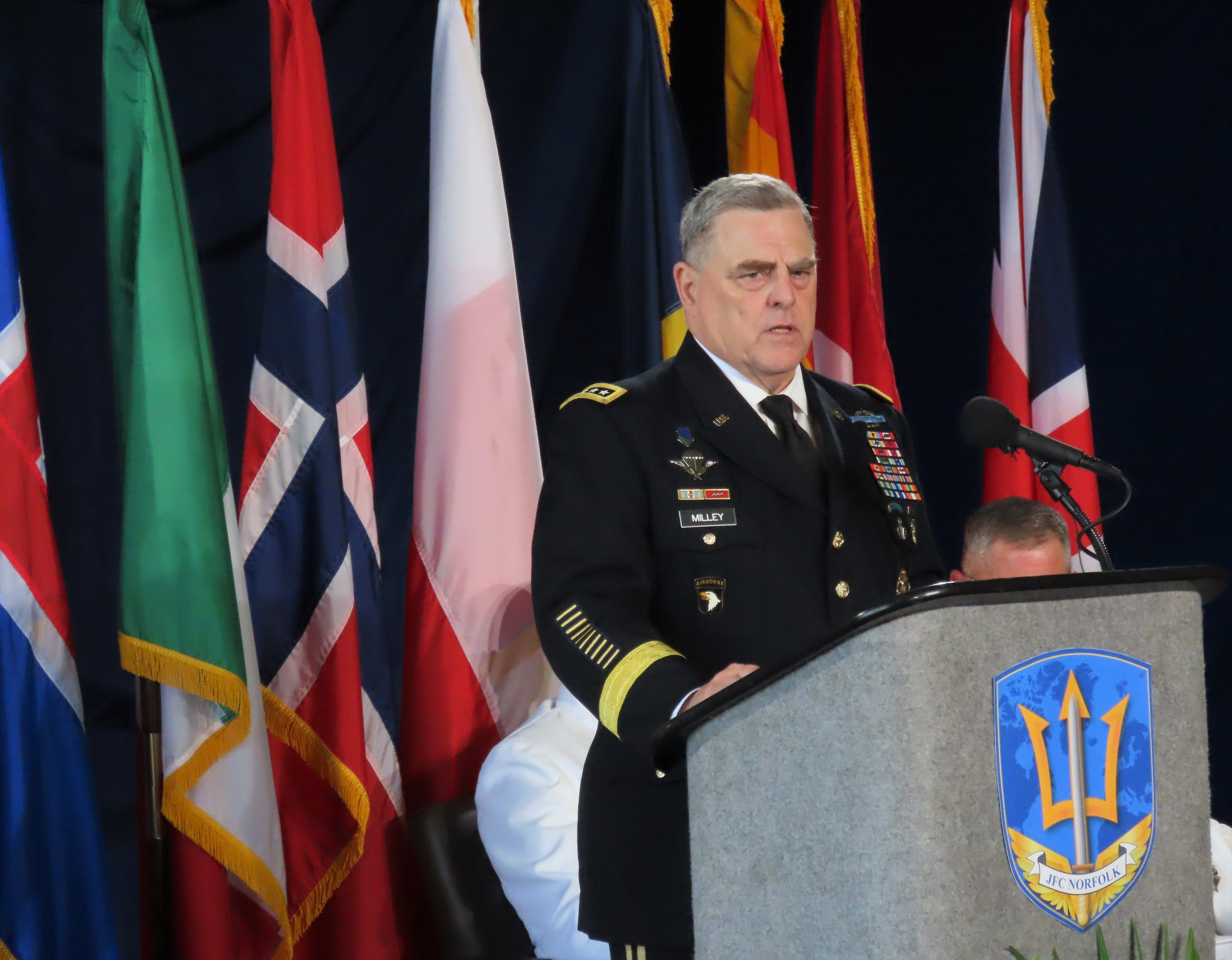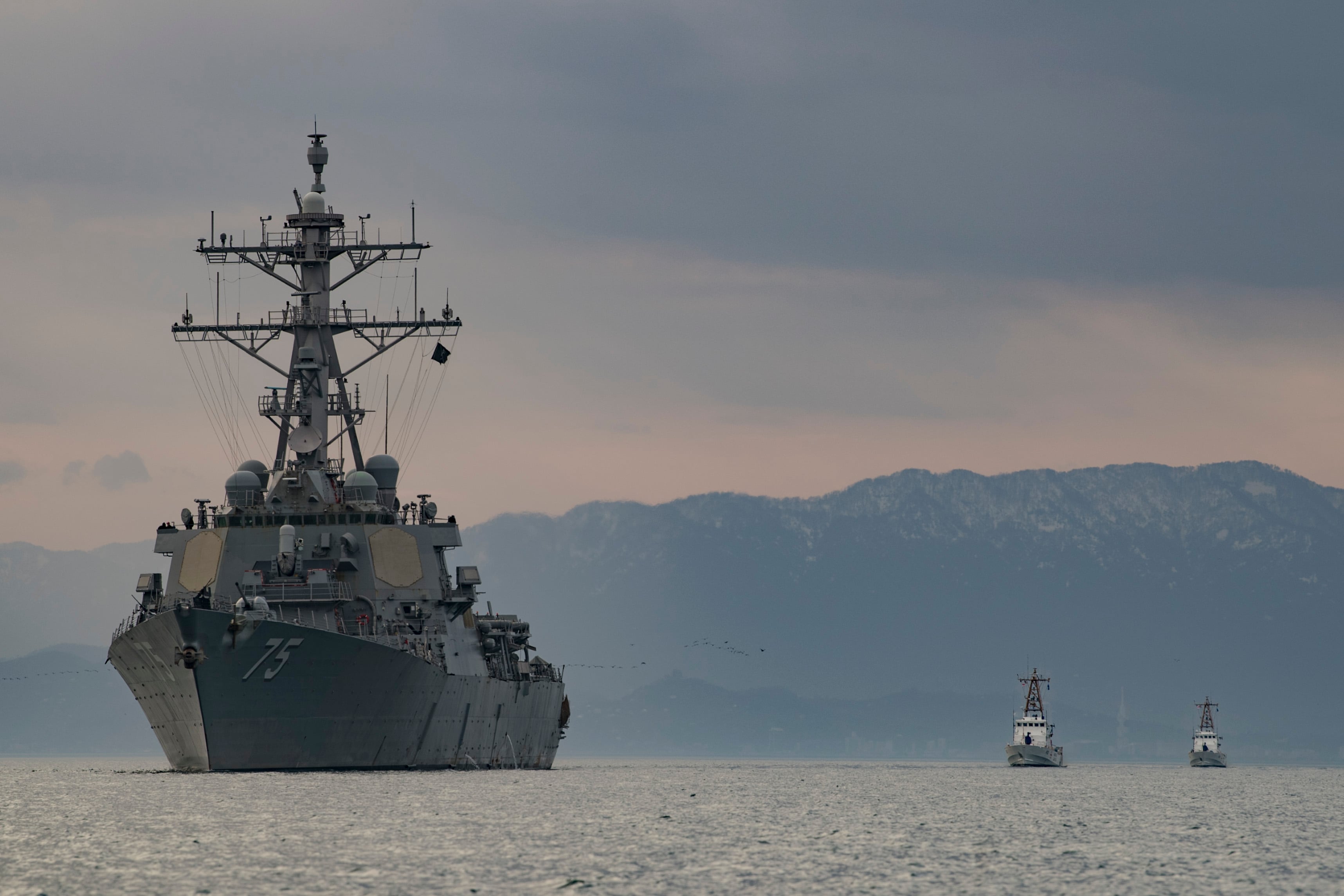WASHINGTON — The Navy is organizing East Coast destroyers to better protect the homeland from Russian threats — specifically those undersea — as part of a new initiative called Task Group Greyhound.
The task group will have Atlantic fleet destroyers focused on training in theater undersea warfare — and, importantly, able to respond to threats at the drop of a hat — according to Rear Adm. Brendan McLane, commander of Naval Surface Force Atlantic.
“Strategic defense of the homeland has entered a new era, and our key competitors have deployed, and continue to advance, a range of capabilities to hold the homeland at risk. ...Task Group Greyhound extends our overmatch by evolving our [undersea warfare] expertise and utilizing those experts to lead the undersea fight,” McLane told reporters Monday.
“We’re going to be ready for when it is real and there is an out-of-area deployer that comes here — we’ll have two ships that are ready to go, and we’ll be ready to get underway at a moment’s notice,” McLane said.
RELATED

The task group is currently composed of destroyers Thomas Hudner and Donald Cook, who were selected for the group given their significant experience with anti-submarine warfare during recent deployments, according to McLane.
The group will grow to include The Sullivans, which will replace Donald Cook when that DDG goes into maintenance, as well as Cole and Gravely next year to create a four-ship force that can have two ships ready for a mission on short notice.
Rear Adm. Brian Davies, commanding officer of Submarine Group 2 and deputy commander of U.S. 2nd Fleet, told reporters in the same call that this new group creates continuity between training in undersea warfare and operations: these destroyers and the aircraft they work with will be solely focused on undersea warfare training for months at a time, both in port and at sea, and they’ll also be expected to deploy to track an adversary sub if one is detected near American waters.
Operational commands like Submarine Group 2 based out of Norfolk, Va., will help create the most realistic training scenarios, sometimes just for one ship and sometimes community-wide theater undersea warfare events that include surface ships, submarines, P-8A Poseidon maritime patrol aircraft and MH-60R Sea Hawks from helicopter maritime strike squadrons.
For example, the task group will capitalize on times when a submarine is going in or out of port and use the opportunity to test out various sub-hunting tactics. The Navy similarly uses transit time for carrier strike groups and amphibious ready groups coming or going from their homeport to work on tactics-development through so-called fleet battle problems. This would use an individual attack sub coming or going and allow it to play an adversary submarine that other Navy assets can practice hunting.
“We take P-8s, HSM helicopter detachments onboard ships like Thomas Hudner here, and we use that opportunity to put them against a live submarine for training,” Davies said. The training will also span “all the way up to and including tactical development exercises and then ... the real honest-to-goodness out-of-area deployer.”
Among those tactical development exercises is Black Widow, which McLane said will be among the events DDGs in the task group conduct.
Black Widow concluded its second iteration in August, and Davies previously told Navy Times that the tactics, techniques and procedures tested out during the exercise “really centered on finding an undersea threat that was very adept at using the environment and the topography to their advantage.”
Additionally, Task Group Greyhound will hold a symposium on a quarterly basis with undersea warfare experts, and it will use live-virtual-constructive training tools to rehearse larger theater undersea warfare scenarios with other assets throughout the fleet.
The objective of these rehearsal missions and academic training is to “practice like we’re going to play” and validate that what is being taught in the classrooms is effective in real scenarios, Davies said.
Prioritizing the mission
The Navy has acknowledged for several years now that Russians submarines are increasingly slipping through the Greenland-Iceland-United Kingdom (GIUK) Gap and operating on this side of the Atlantic. That acknowledgement spurred the standup of U.S. 2nd Fleet, which was meant to coordinate anti-submarine warfare efforts across the Atlantic and in conjunction with the Italy-based U.S. 6th Fleet. It also spurred the standup of Submarine Group 2 that Davies leads — where he is dual-hatted as the deputy 2nd Fleet commander, raising the profile of sub-hunting missions to the fleet level.
McLane said Task Group Greyhound continues the standup of organizations meant to counter Russian subs near the homeland, with this organization being “the tactical arm of surface warfare to support this 24/7.”
RELATED

Still, the destroyers that will be conducting this mission are what Davies called “high-demand low-density assets” — between deployments and sometimes double-pump deployments with aircraft carriers, solo-deployer requests, overrun maintenance availabilities and other fleet responsibilities, an available destroyer is hard to come by. That the Navy is fencing off four for this mission is a big statement in itself.
Similarly, the Navy has struggled in past budget years to keep sufficient funding for P-8s and HSM squadrons that aren’t on deployment. With anti-submarine warfare operations growing globally, deployed units have burned through flying hour funding faster than anticipated, leaving budget shortfalls at the end of the fiscal year that in some cases has led the Navy to halt operations for non-deployed units. USNI News outlined what this looked like at the end of fiscal 2019.
Task Group Greyhound is making the statement that this mission at home is just as important as one overseas.
“We have to fence off two now, four in the future to make two, so that we’ve got a ready-to-go force to be able to respond to threats to the homeland. And if we don’t do that, believe me, we’ll have them doing other things all over the place, no doubt about it. So this is prioritizing maritime homeland defense and putting that on the level just as we prioritize deployers,” McLane said.
Davies added that, as a deputy fleet commander, he’d have a say in prioritizing scarce resources.
“It elevates that [anti-submarine warfare priority] to a deputy position at a fleet staff, much like we’ve done over in Europe at Submarine Group 8 dual-hatted as the deputy of 6th Fleet. We’ve done the same thing on this side of the Atlantic to basically synchronize our communications on either side of the Atlantic, but also to prioritize when it comes to scheduling where we need to put those assets, and that includes submarines, surface ships, aviation assets as well,” he said.
Davies explained that, though the task group fences off surface ships for this mission, the entire undersea warfare community will benefit. By having a couple destroyers that are highly trained in ASW, the HSM helicopters will have a focused partner to fly with instead of looking for any free ship that they can land on. The P-8s can fly missions and drop sonobuoys on targets, knowing that an expert team in a DDG combat information center will pick up on the sonobuoy and prosecute the target.
McLane said that, for the first few years, pre-existing schedules mean that Task Group Greyhound can only pull from destroyers coming back from deployment, using them while they’re in the sustainment phase of the Optimized Fleet Response Plan before they head into maintenance about six months later.
By the 2025 to 2027 timeframe, he said the Navy should be able to take a destroyer and put it into the task group for an entire deployment cycle — meaning the ship would go through its basic training phase after maintenance and then spend the better part of three years focused solely on the underwater mission set.
Reaching full capability
Task Group Greyhound reached initial operating capability this month and is expected to hit full operational capability by June 2022. The first thing that must be tackled in the interim is nailing down academics and understanding the task group’s vision, according to Davies.
That means bringing in experts from commands like Undersea Warfighting Development Center and Carrier Strike Group 4 — along with those from individual communities such as submarine, surface and air forces — and establish a training environment customized to each of the ships and their various experiences, Davies said.
“After we establish that academic background...then it’s on to how do we institute those tactics, techniques and procedures that we’ve ingrained in the crew into live exercises, starting at maybe just the target of opportunity, working all the way up through tactical development exercises, to a real requirement for combating an out-of-area deployer,” Davies said.
Likewise, McLane is preparing for the next ships to join the task force, specifically preparing for the first turnover of a destroyer. The Donald Cook is slated to enter an availability period next year, while destroyer The Sullivans will be ushered into the task force in January to replace it.
Other destroyers set to eventually join the task group are the Cole and the Gravely, currently assigned to the aircraft carrier Harry S. Truman’s strike group.
Megan Eckstein is the naval warfare reporter at Defense News. She has covered military news since 2009, with a focus on U.S. Navy and Marine Corps operations, acquisition programs and budgets. She has reported from four geographic fleets and is happiest when she’s filing stories from a ship. Megan is a University of Maryland alumna.









